Sometimes, you just want to go fast. When the LattePanda/ DFRobot folks reached out to us about reviewing the LattePanda Sigma, we are skeptical. It was an Intel-based single-board computer (SBC) and I said “OK” when I had been up for about 40 hours straight. Then, it arrived, Bryan set it up, and we realized it is much more and much better than we thought it would be. This SBC is fast, supports Arduino, and while we were reviewing it got in-band ECC support. There is a lot to go over, so let us get to our review.
LattePanda Sigma Overview
We have a video for this one since it is very exciting.
We always suggest watching this in its own tab, window, or app for a better viewing experience.
The LattePanda Sigma comes in three flavors. First a barebones 16GB of RAM kit ($579.) There is then the same 16GB model with WiFi 6E and a 500GB PCIe Gen4 NVMe SSD ($648.) Finally, there is an upcoming 32GB barebones model ($629.) We were sent the 16GB/ WiFi 6E/ 500GB model for review, but after using the unit, the 32GB barebones would probably be our top choice. The RAM is soldered, so this is a choice made at the time of purchase.
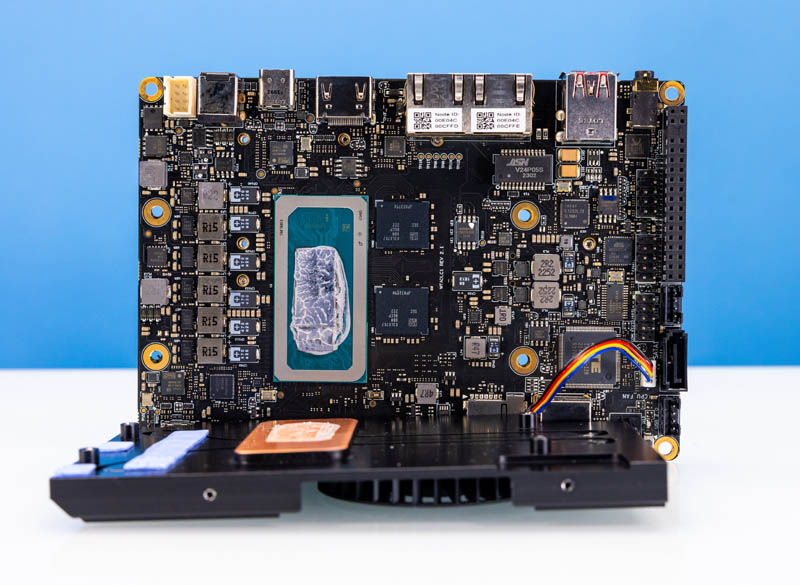
The strange part about this system is that it is between a single-board computer, like a Raspberry Pi, and a mini PC like an Apple Mac Mini M1 or M2 (non-Pro), or one of the system we review in our Project TinyMiniMicro or STH Mini PC series. The form factor, and features like Arduino support and GPIO arrays feel like it is something from a Raspberry Pi, but the performance is like a mainstream PC. That is both strange and fascinating.
With that, let us get to the hardware.
LattePanda Sigma Hardware Overview
The box is actually quite nice, somewhere in the packaging realm of non-Apple mini PCs that we review. Ont he box, it supports both Windows and Linux.
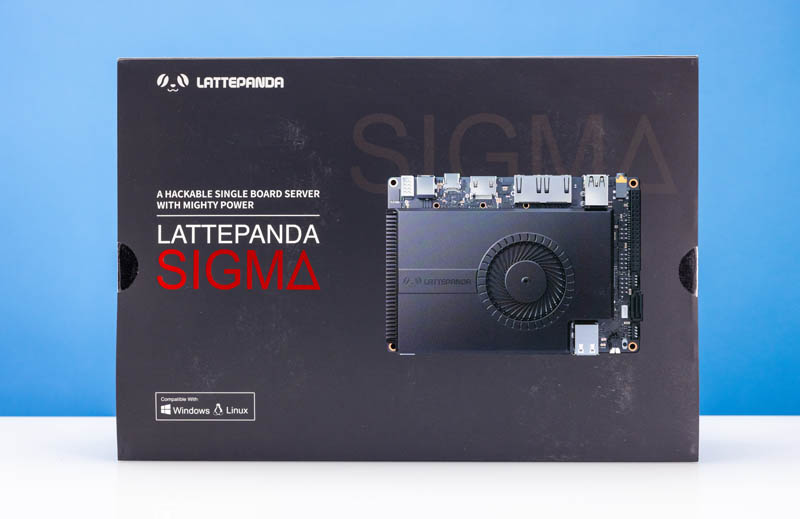
The unit came with a baseplate that also helps cool the SSDs and provide structural support to the system. The actual board is effectively the footprint of a 3.5″ hard drive. That makes it larger than a Raspberry Pi, but smaller than many mini PCs.
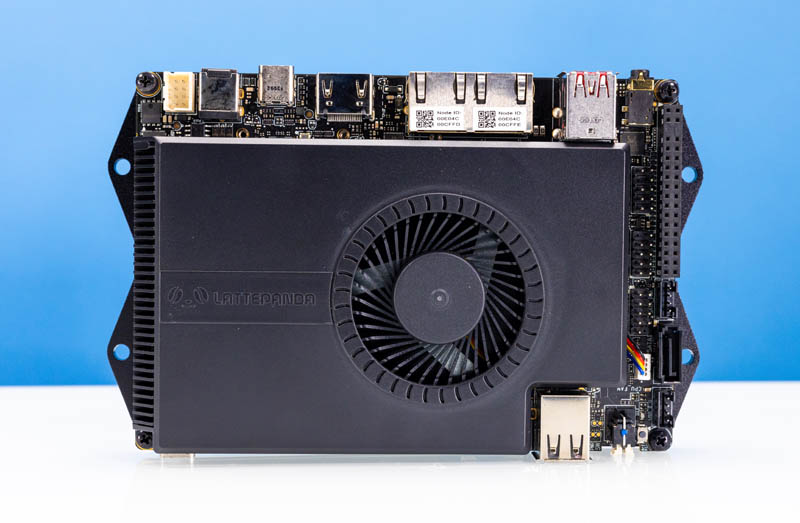
Here is the bottom LattePanda branded baseplate. The unit comes with four standoffs that screw into this baseplate and that we used. There are also eDP and touch connectors for displays and a RTC battery header on the bottom.
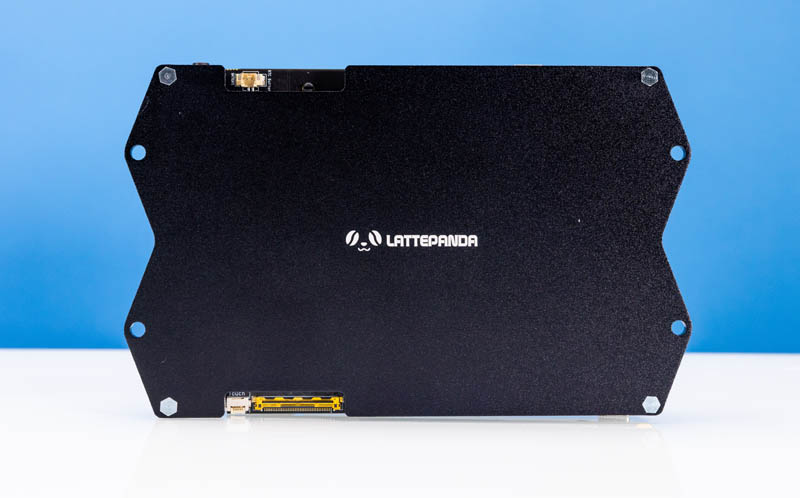
On the front edge, there are two USB Type-A ports, and a power button. The power button was in the box, and not installed here atop the LED. Next to the Type-A ports and under the heatsink is a micro SIM card slot that we did not get to test. On the far left side there is a USB Type-C port that is actually a Thunderbolt 4 port.
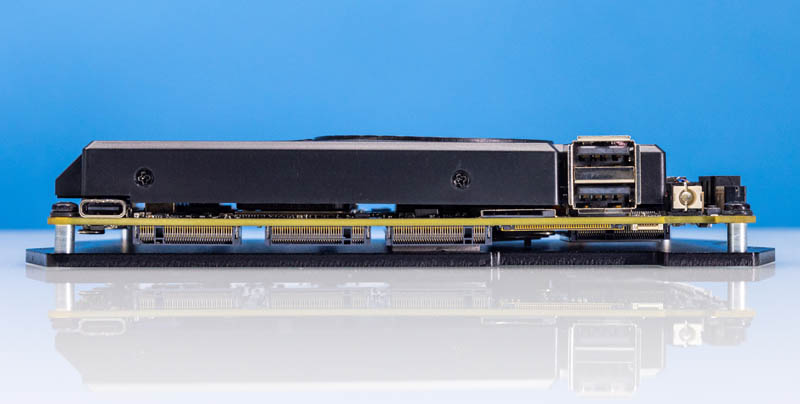
On the opposite side, we get a second Thunderbolt 4 port. We also get two power inputs and a HDMI port. Video out, aside from the Thunderbolt ports, is a HDMI port. Finally, there are two USB ports, and audio jack, and two Intel i225-V 2.5GbE ports.
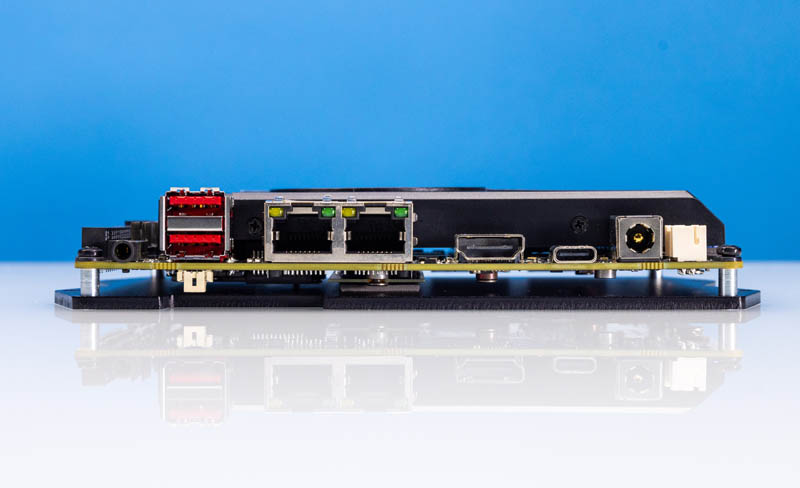
The top of the unit is dominated by the low-profile cooler for the Intel Core i5-1340P processor.
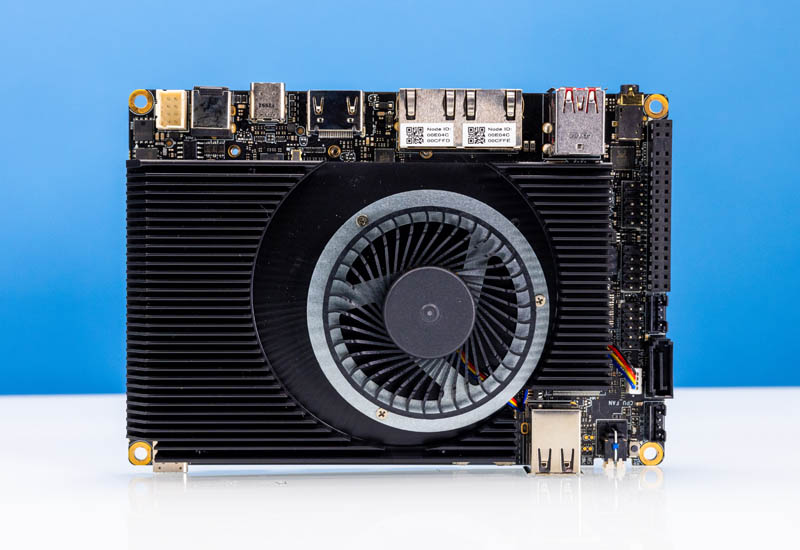
The cooler vents off to a side of the board.
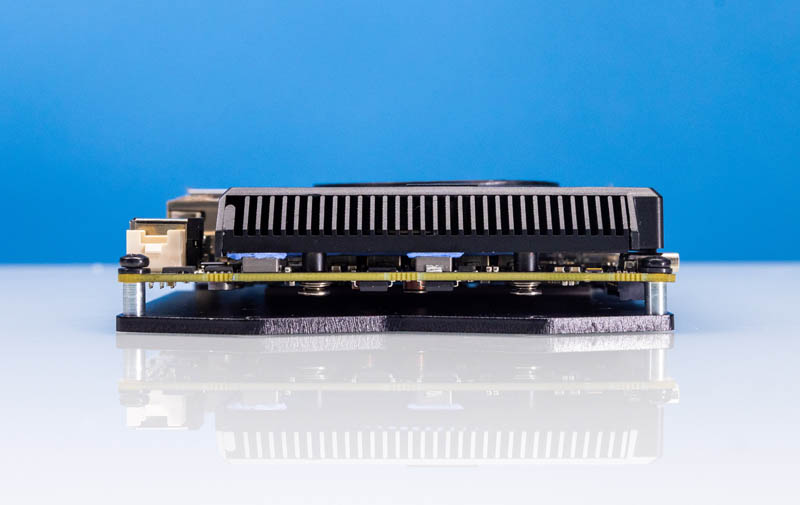
Underneath we can see the Intel Core i5-1340P. There is something else next to the CPU. This is the LPDDR5-6400 memory in dual-channel mode. Here, LattePanda is getting more performance, but at the expense of upgradability. That feels a bit strange on a platform designed for tinkering.

The bottom baseplate also acts as a cooler.

Thermal pads can help transfer heat from the SSDs on the bottom of the board to the baseplate. Here we can see our Intel AX211 WiFi 6E card and a WD Black SN770 PCIe Gen4 NVMe SSD.
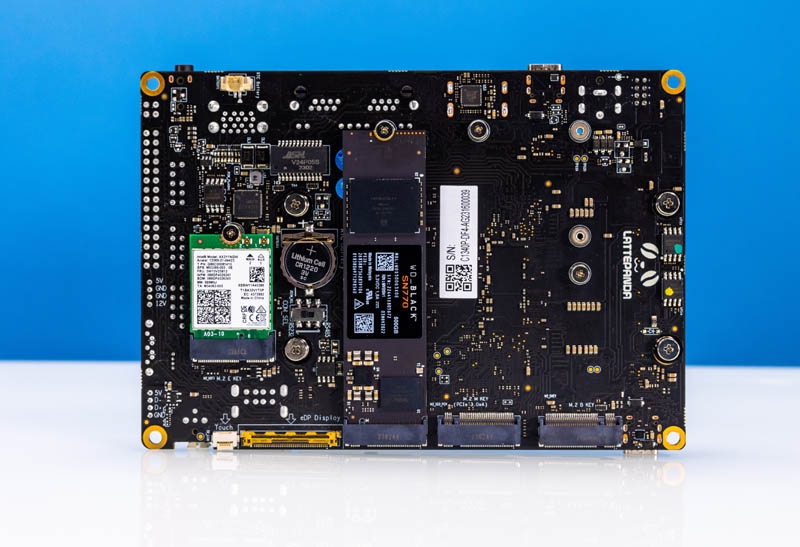
There are two other slots for additional expandability. That is something that both the Raspberry Pi and Apple Mac Mini lack, easily upgradable high capacity and speed storage.
Next, let us get to the performance.

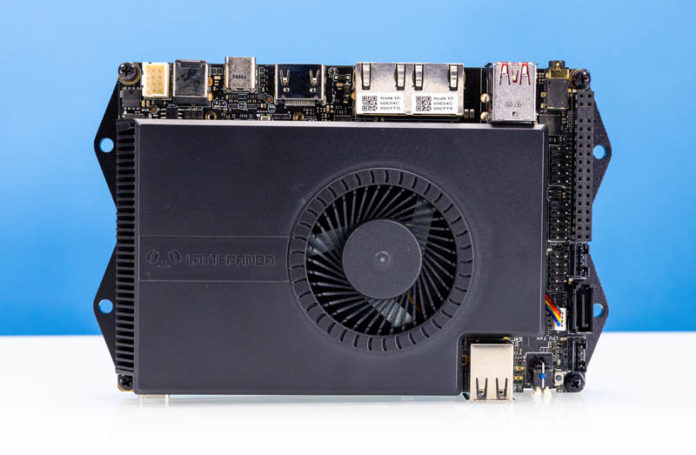
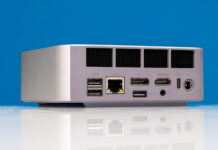

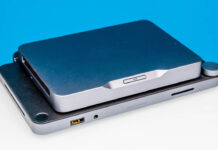
Not a criticism against STH at all, genuinely curious, is there an uptick of unusual traffic around the sbc/tiny/mini reviews? Always have been curious to see what the bot process is for scalpers and when/how they decide what new items to hit, and curious with your traffic if seeing a review here is one of the parts of the trigger functions.
DFRobot has not succumb to the scalp-side yet, the market places of the other have already gone full throttle.
Only credible as a “Raspberry Pi alternative” if Raspberry Pis sold for $600+
Why are you calling this raspberry pi when a raspberry pi is 60 or 70$ and this is 600+ dollars? THis is misleading and annoying to say the least.
Why not review the latest intel nuc and call it a raspberry pi killer? Get real, STH.
I thought this was going to be a high performance low budget alternative to a Pi! If it’s 15 times faster than a Raspberry Pi for 17+ times the price isn’t not really that great, especially as none of the existing Raspberry Pi cases will work (e.g. doesn’t look like this can be DIN rail mounted like a Pi can) and I couldn’t see anything in the article about the different low cost cameras available for it like the ones for a Pi. Is doesn’t look like it’s compatible with Pi hats either. So it doesn’t seem to have anything to do with a Pi?
Yikes. Guys. SBC’s are an entire market segment. Price is not the only factor here. RPi’s are used in a lot of places.
Also, by the time we get power, a switch port, a boot drive and etc. to a RPi 8GB or something, we are at $90-110 each even without scalpers. So 15x the performance at 6-6.5x the price is not bad. It also ends up being lower power than a cluster of RPi 4B’s and less management since it is one node versus a cluster.
It will not beat apple mini on graphics performance. All benchmarks shown here are for cpu. What about gpu :)
SBCs are a whole market segment and nobody is disputing that, but so are cars, and I think you’d get the same reaction if you posted about a Lamborghini being a great alternative to a Toyota :) Technically it may be true but it’s not a viable option for most Toyota owners, and you’d be getting their hopes up for nothing!
I’m using Raspberry PI for single purpose: Wolfram Mathematica for Raspberry PI for occasional recreational math
IIRC it is irreplaceable to any alternative-pi
@Malvineous
If you need (emphasis on need) something 10 times better than a Toyota, spending 6 time the price to buy a Lambo instead of buy 10 Toyota (spending 10 time) is an alternative. a good one.
The key for the title is that if you need something in a format factor of a PI but with 10 time the performance this is a good option, if you would like something at the price range of a PI with 10 time the performance well.. do not get your hopes up 8-)))
I’ve used a Raspberry circa 2011. It was a toy, really. Nothing wrong with that, I bet it has turned on two generations of people to making stuff with computers.
This thing is a small PC computer with IO useful to a person who has outgrown Raspberry. I like it.
I wish all mobos had GPIO and similar headers to interface with external circuitry: programming USB is a pain in the neck.
I also wish the PC industry would give up on x16 style PCIe slots & DIMMs, and move on to cabled PCIe jacks and SODIMMs, and smaller mobos. Form factor ATX et al, they exist to support DIMM slots & x16 PCIe slots… and DIMM slots & x16 PCIe slots only still exist because of ATX.
The vendor’s page indicates that there’s an ATMEGA32U4 ‘co-processor’ onboard. Are any of the GPIO type headers provided by the x86 side; or does it appear internally as a fairly standard PC with an arduino permanently attached to one of its USB ports?
@Patrick Kennedy – comparing it to a Raspberry is a bit precious. It has GPIO headers, OK. In every other metric it is a class or three above though.
I’ve seen $200,000+ machines with Pi’s in them because the company thought that they’ve got the best Ubuntu support. I’ve also seen many Pi’s in a system to handle different functions because one CPU gets overloaded. I’m not kidding.
This makes more sense than people on here are giving credit for. That video thumbnail saying 15x Raspberry Pi is accurate but it’s too generous towards the Pi’s since you’ve got overhead for clustering and networking that many and the Pi’s will use 30% more power. What it wouldn’t have is 15x the RAM, but it’s also not losing hundreds of MB per SBC to OSes installed on each. When you’ve got to do video analytics I’d rather have m.2 SSD than trying to write to a SD card.
Now if only this had faster networking… Perhaps it’s possible to convert one of the m.2 slots to a PCIe slot with a special cable.
Is it only me that think that this would be a killer Car-PC for a car or motorhome?
3 displays, one in front and two in back of seats. Lots of I/O via Arduino/Python to control all kinds of sensors and gadgets and a SIM card to bring down 4G/5G and possibly set up a wifi spot.
It would be fairly easy to set up a Proxmox and utilize the power with a few VM’s. A game emulator for the kids, a nice Plex front.
@Lennong for a RV, yeah. Having set up a pair rpi 4B, a leisure 100ah lifepo4 battery with alternator charginy etc… I was kind of amazed at how quick that 100ah battery goes down with both using a masive 10-12W combined peak (ones a openwrt with modem the other is infotainment both have mipi screens). You would want a solar panel covering the roof plus alt charging and a 200ah battery for this with hdmi screens.
Pi alternative for $629? maybe a Pi cluster alternative lol. Or an alternative to a current gen tiny, mini, micro
@w Well, I am thinking a bit bigger motorhome actually. A genset onboard, and overnights mostly in places where you get power and so on. Big bad ‘RV’, big bad onboard server and control unit.
So any idea how well an external GPU would do with this unit?
I take umbrage on your presentation of benchmarks. You don’t properly display “this is the product / CPU we’re testing now” (either with a red marking or a tiny arrow or whatever) – you force me to read all those nonsensical CPU models and try to find the one you’re talking about. In one graphic you “bolded” one CPU – but it’s i7, not the i5 you’re testing.
Umbrage! I will spit on your grave! I will dance naked whilst doing so!
@Nils: There are 10 GB/s networking adapters for M.2 slots. I have not been able to find anything faster than that, and am thinking of making one. It might be possible to find a work around though, like with occulink cable for external monitors.